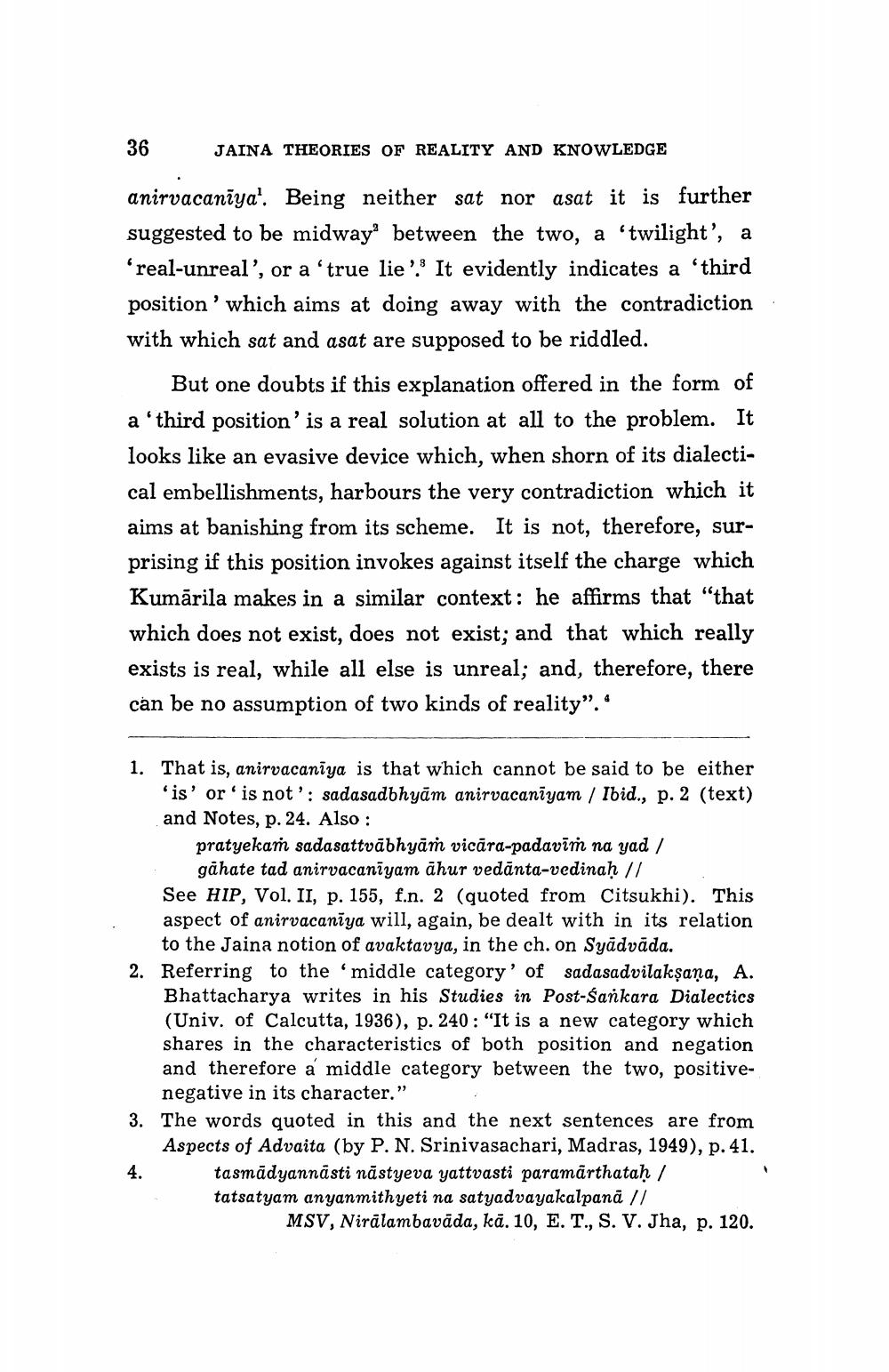________________
36
JAINA THEORIES OF REALITY AND KNOWLEDGE
anirvacanīya'. Being neither sat nor asat it is further suggested to be midway between the two, a 'twilight', a 'real-unreal', or a 'true lie'' It evidently indicates a 'third position' which aims at doing away with the contradiction with which sat and asat are supposed to be riddled.
But one doubts if this explanation offered in the form of a third position' is a real solution at all to the problem. It looks like an evasive device which, when shorn of its dialectical embellishments, harbours the very contradiction which it aims at banishing from its scheme. It is not, therefore, surprising if this position invokes against itself the charge which Kumārila makes in a similar context: he affirms that "that which does not exist, does not exist; and that which really exists is real, while all else is unreal; and, therefore, there can be no assumption of two kinds of reality".
1. That is, anirvacaniya is that which cannot be said to be either
'is' or 'is not': sadasadbhyām anirvacanīyam / Ibid., p. 2 (text) and Notes, p. 24. Also:
pratyekaṁ sadasattvābhyām vicāra-padavīín na yad /
gähate tad anirvacanīyam āhur vedānta-vedinah // See HIP, Vol. II, p. 155, f.n. 2 (quoted from Citsukhi). This aspect of anirvacanīya will, again, be dealt with in its relation to the Jaina notion of avaktavya, in the ch. on Syādvāda. Referring to the middle category' of sadasadvilaksaņa, A. Bhattacharya writes in his Studies in Post-sankara Dialectics (Univ. of Calcutta, 1936), p. 240 : "It is a new category which shares in the characteristics of both position and negation and therefore a middle category between the two, positive
negative in its character." 3. The words quoted in this and the next sentences are from Aspects of Advaita (by P.N. Srinivasachari, Madras, 1949), p. 41.
tasmādyannästi nästyeva yattvasti paramārthataḥ / tatsatyam anyanmithyeti na satyadvayakalpana //
MSV, Nirālambavāda, kā. 10, E.T., S. V. Jha, p. 120.




